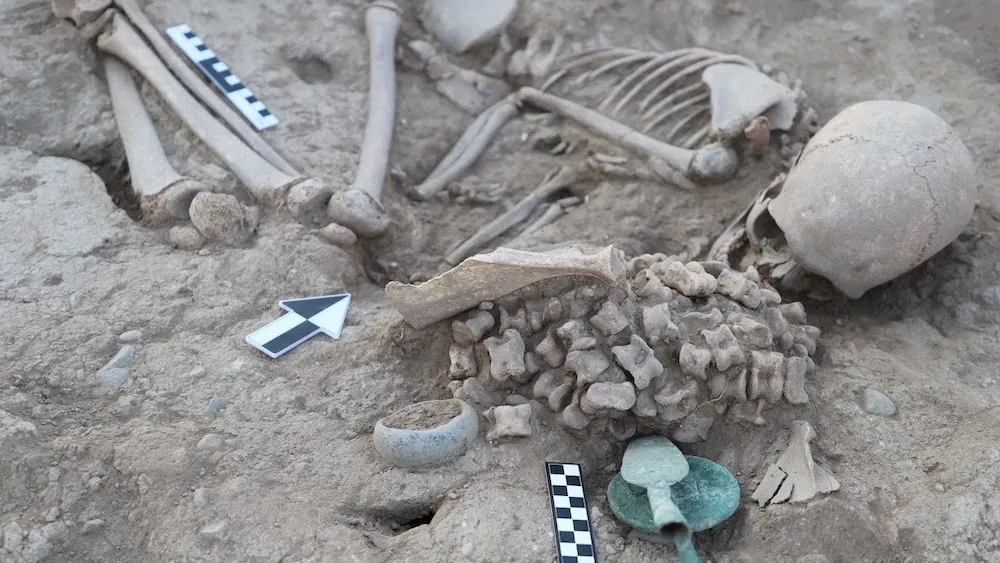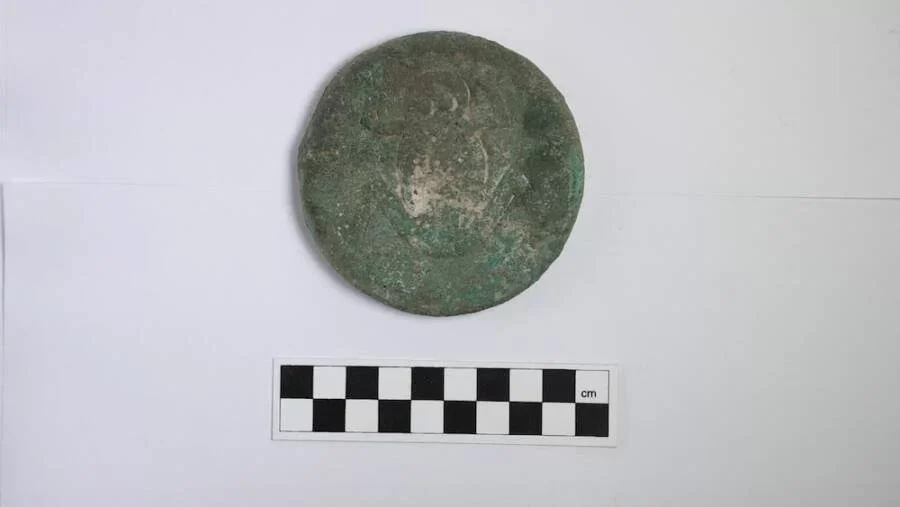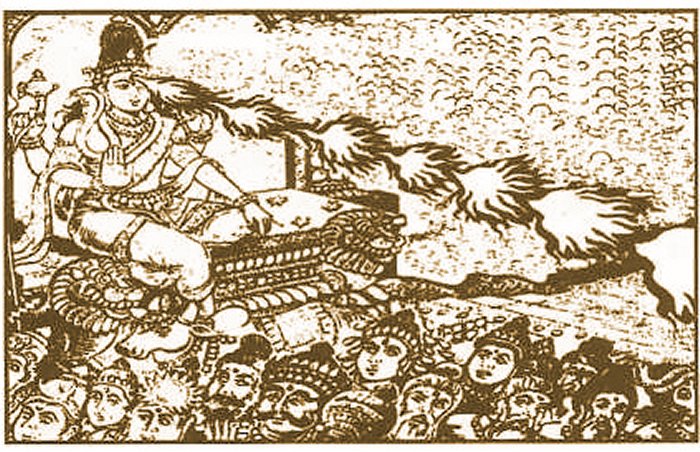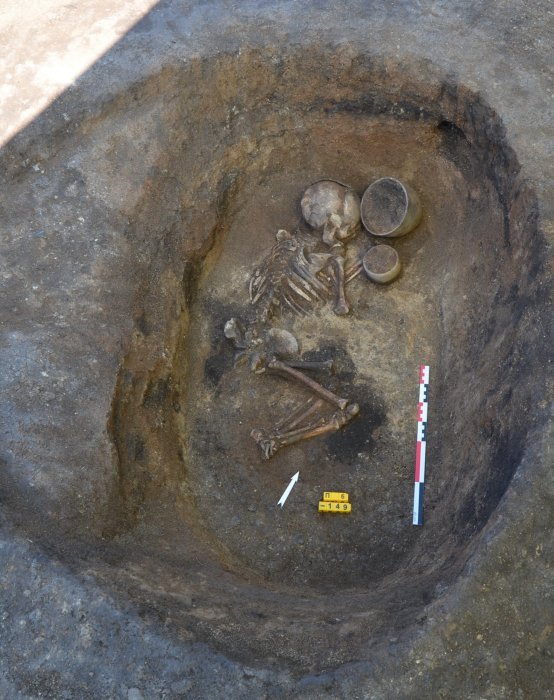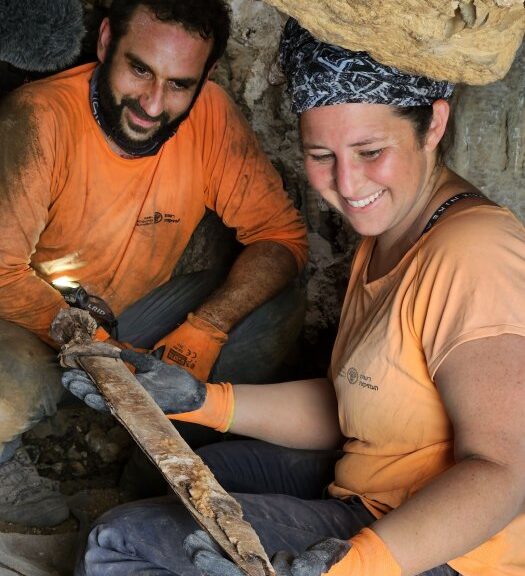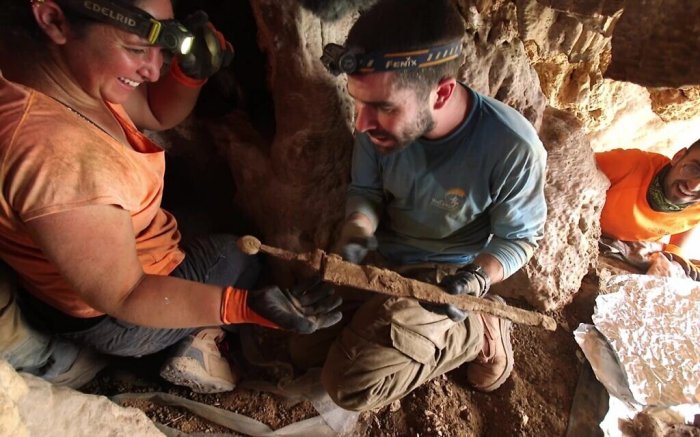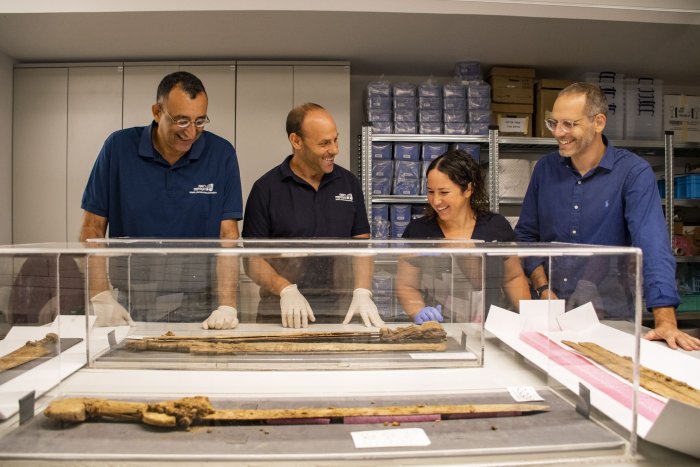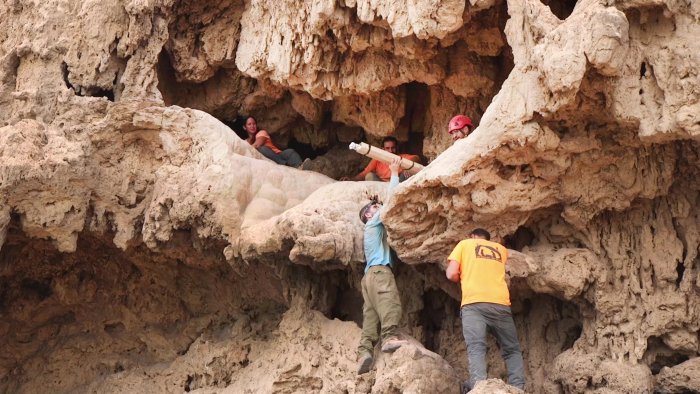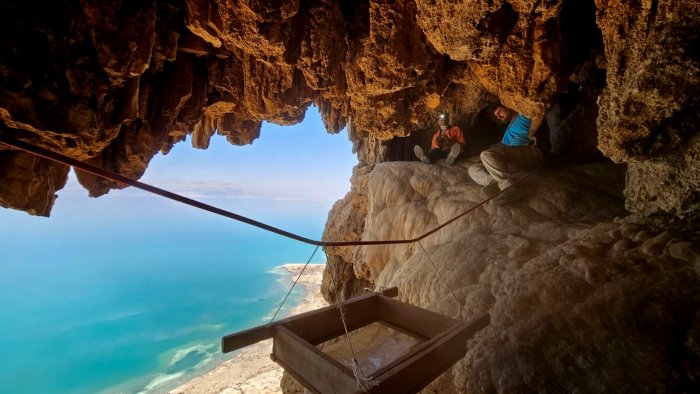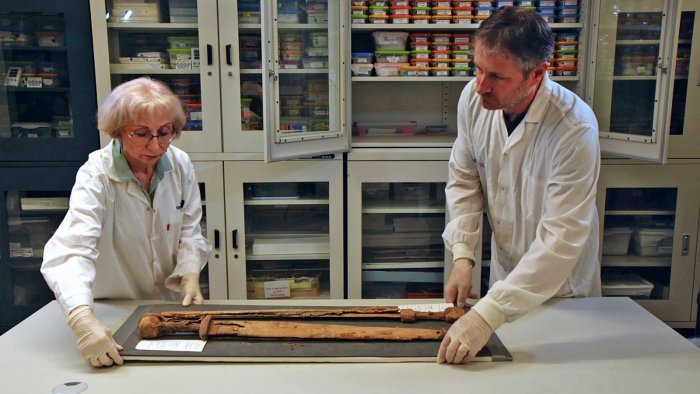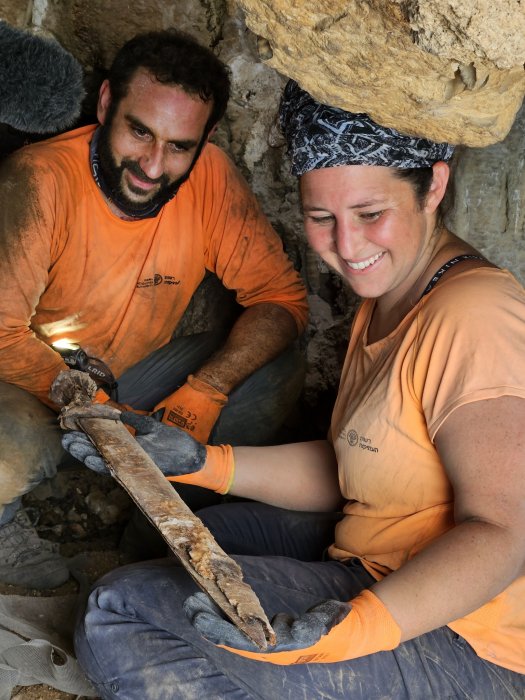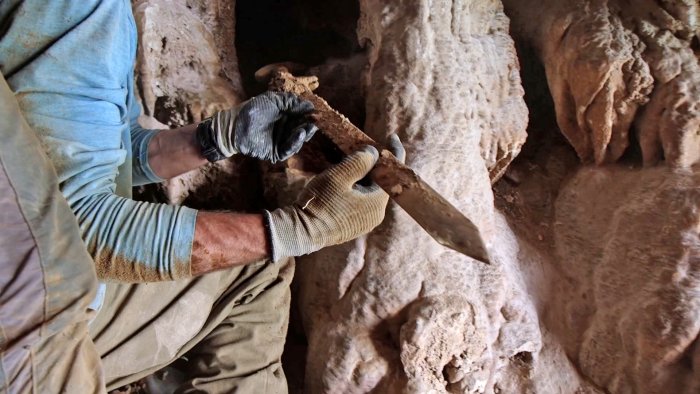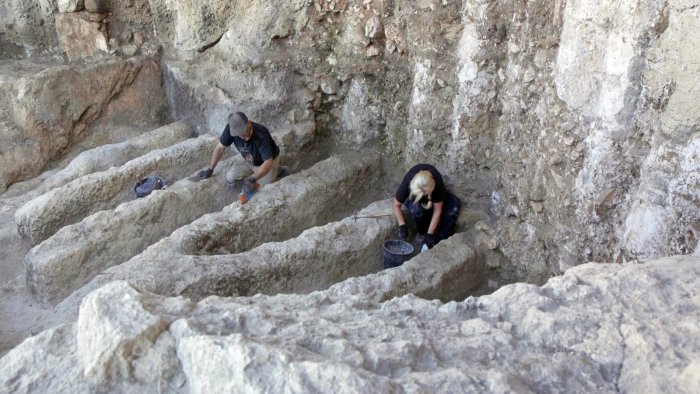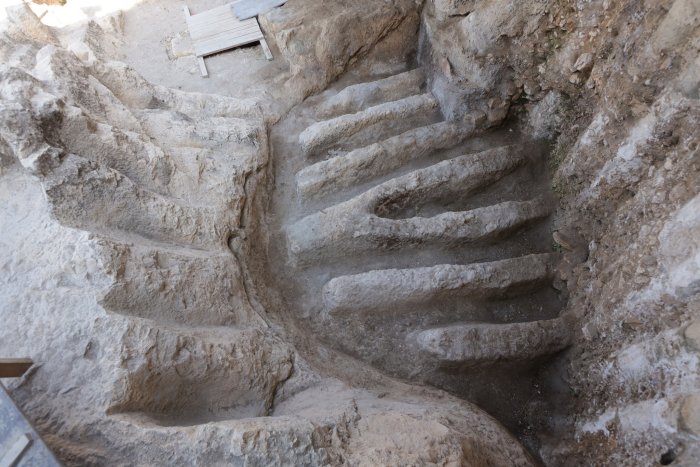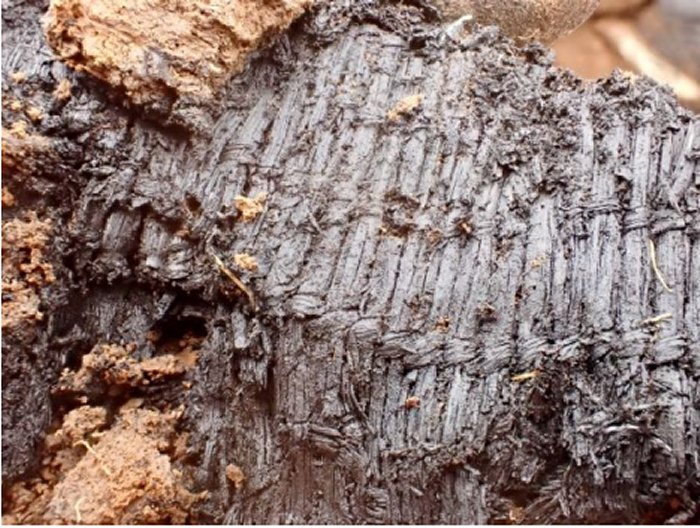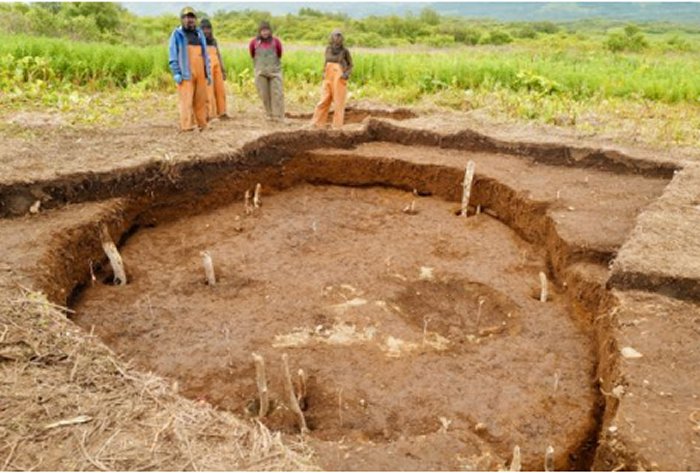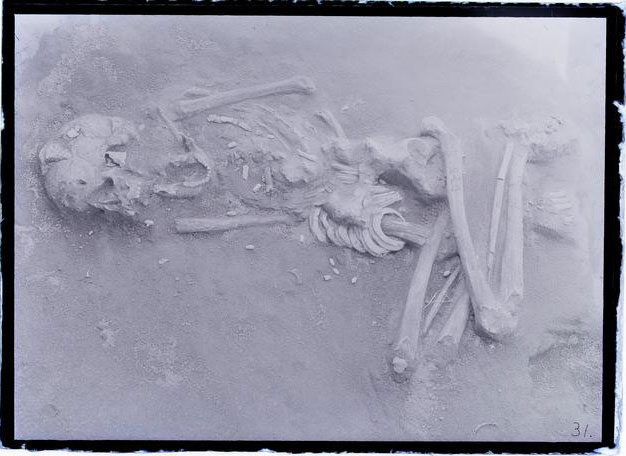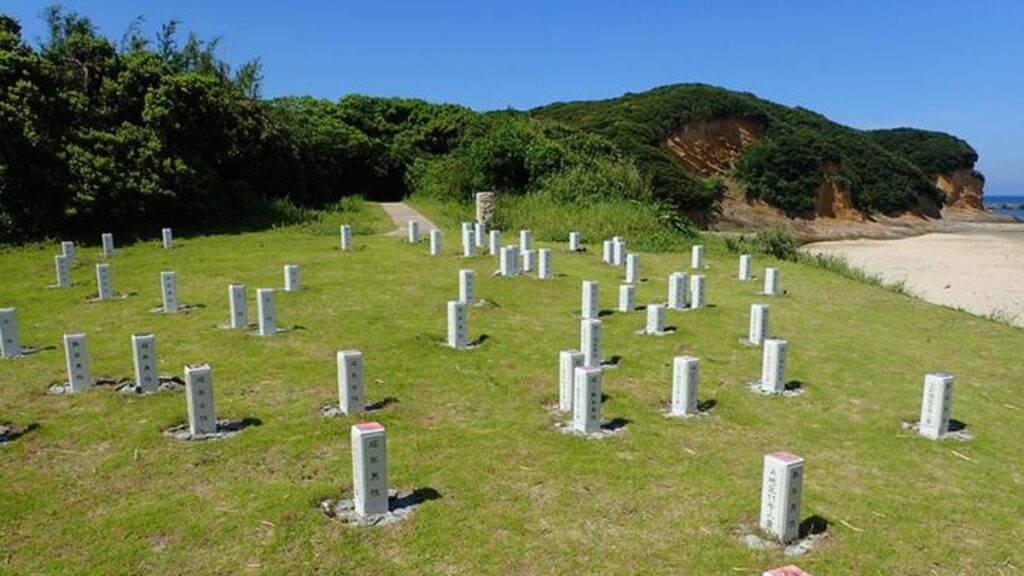‘It’s a dream’: 4 Roman swords likely stolen as war booty 1,900 years ago discovered in Israeli cave
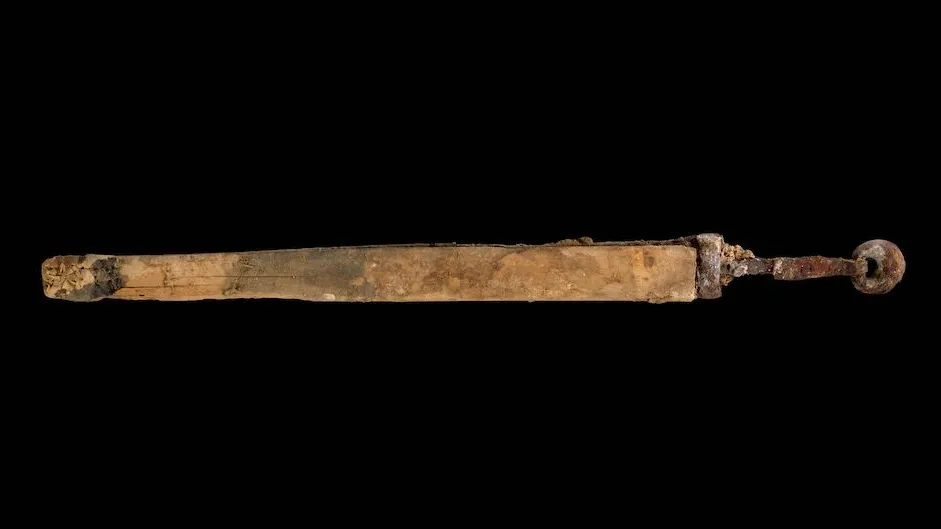
Archaeologists in Israel have discovered four well-preserved 1,900-year-old Roman swords lodged in a crevice inside a cave in the Judaean Desert — weapons that rebel Jewish forces likely seized in battle and later hid.
Of the four “rare” weapons, three with iron blades were still protected in their wooden and leather sheaths.
The blades of three of the swords measured between 24 and 26 inches (60 and 65 centimeters) with dimensions similar to Roman “spatha” swords, while the fourth had a much shorter, 18-inch (45 cm) blade and was classified as a ring-pommel sword.
All of the swords were “standard” issue and used by Roman soldiers stationed in Judaea at the time, according to a statement released by the Israel Antiquities Authority (IAA) on Wednesday (Sept. 6).
“Finding a single sword is rare — so four? It’s a dream,” the researchers wrote in the statement. “We rubbed our eyes to believe it.”
Researchers think Judaean rebels may have hidden the cache inside the cave in what is now En Gedi Nature Reserve in northern Israel after seizing the items from the Roman army as “booty” during the Bar Kokhba Revolt, a rebellion that was led by Jews in the Roman province of Judaea and unfolded between A.D. 132 and 135.
“Obviously, the rebels did not want to be caught by the Roman authorities carrying these weapons,” Eitan Klein, IAA deputy director and one of the directors of the Judean Desert Survey Project, said in the statement.
“We are just beginning the research on the cave and the weapon cache discovered in it, aiming to try to find out who owned the swords, and where, when and by whom they were manufactured.”
The swords were part of an exhibition on Wednesday promoting an article about the finding published in the new research book “New Studies in the Archaeology of the Judean Desert: Collected Papers.”
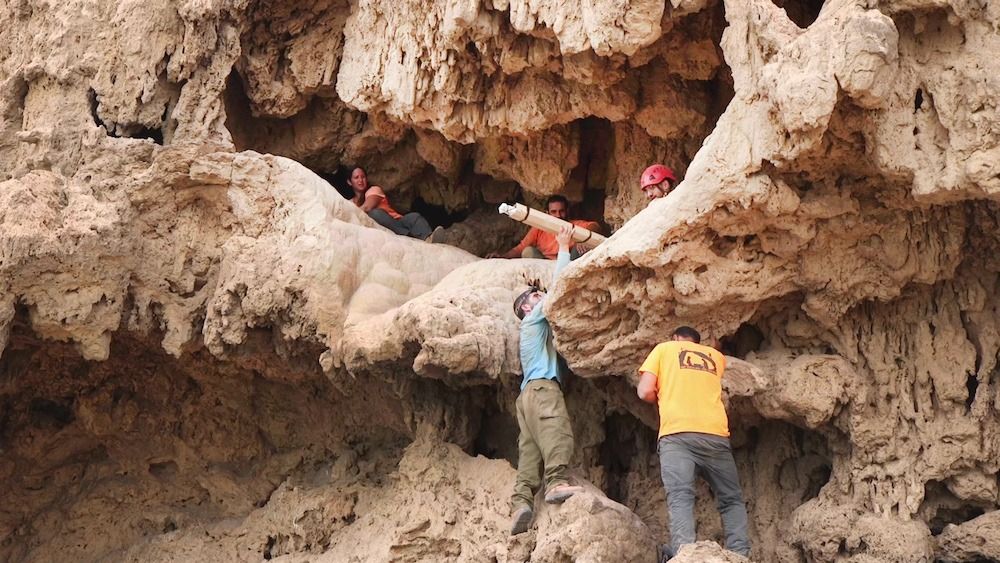
The discovery comes 50 years after a different team of researchers found a stalactite inside the cave.
The formation bore an ink inscription scrawled in ancient Hebrew script that was similar to text written during the First Temple period (957 B.C. to 586 B.C.), which began with the construction of the temple of King Solomon and ended with its destruction at the hands of the Babylonians.
Researchers visited the cave to photograph the stalactite, hoping to find additional inscriptions. Instead, they stumbled upon the cache of swords.
“This is a dramatic and exciting discovery, touching on a specific moment in time,” Eli Escusido, director-general of the IAA, said in the statement, adding that the finding is a “unique time capsule” in Judaean history.
